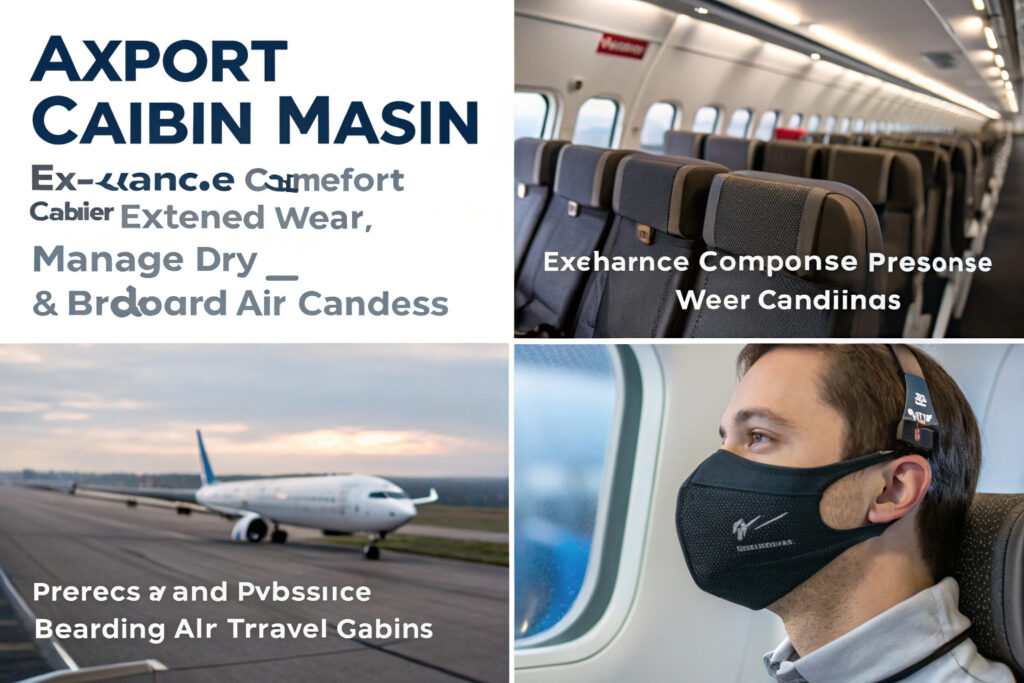Air travel presents unique challenges for mask wearers—prolonged wear in dry cabin air, fluctuating temperatures, pressure changes, and the need to maintain protection through various airport environments. The wrong mask design can turn a long flight into an exercise in discomfort, while the right design can be barely noticeable throughout the journey. Understanding which features address specific air travel discomforts is key to selecting or designing masks that travelers will actually wear properly from check-in to baggage claim.
The best fabric mask designs for air travel comfort combine contoured 3D structures that don't touch the mouth, moisture-wicking interiors, adjustable nose bridges with soft padding, and ear-saving attachment systems. These designs address the primary pain points of extended wear in dry, pressurized environments while maintaining both protection and presentability throughout the journey.
Air travel comfort requires addressing multiple simultaneous challenges: dry cabin air, extended wear time, pressure changes that affect fit, and the need to communicate and drink while masked. The most successful designs solve several of these issues simultaneously through thoughtful engineering. Let's examine the specific design features that deliver genuine comfort during air travel.
What Structural Designs Prevent Mouth Contact and Maintain Breathing Space?
Masks that press against the mouth and nose become increasingly uncomfortable during long flights and can make breathing feel restricted.
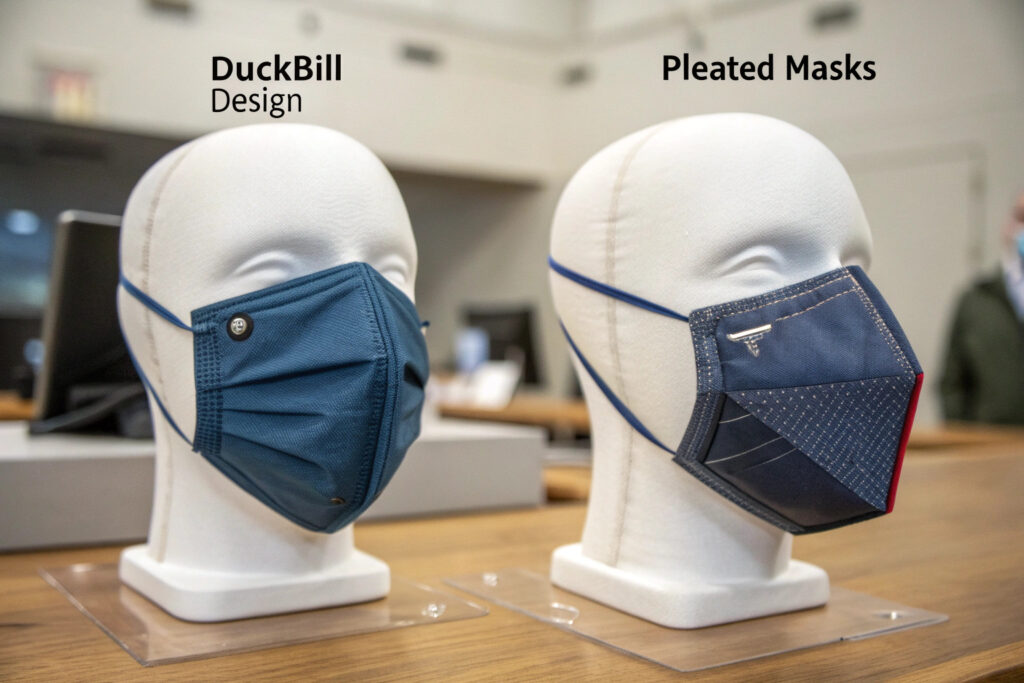
Why do 3D contour masks excel for air travel?
Three-dimensional molded designs create consistent air space in front of the nose and mouth, preventing the fabric from touching the lips even during conversation or facial movements. This structural integrity means the mask doesn't collapse against the face when the wearer talks, drinks, or changes head position—common occurrences during flights. The maintained breathing space also reduces the feeling of claustrophobia that some travelers experience with closer-fitting masks. Our contoured designs provide 40-50% more internal air volume than flat-fold masks of similar dimensions.
How do duckbill designs enhance breathing comfort?
Projected duckbill structures offer the maximum internal air space of any mask design, creating a true 3D dome that completely eliminates mouth contact. This design is particularly beneficial for travelers who feel anxious or restricted in traditional masks, as it provides unimpeded breathing space. The peaked structure also naturally directs exhaled breath downward, reducing glasses fogging—a valuable feature for travelers who wear prescription glasses or sunglasses. While slightly bulkier in appearance, duckbill designs consistently receive the highest comfort ratings for flights over 4 hours.
What Materials and Linings Manage Cabin Air Dryness?
Airline cabin humidity typically ranges between 10-20%—much drier than the 30-60% humidity found in most comfortable environments—creating unique moisture management challenges.
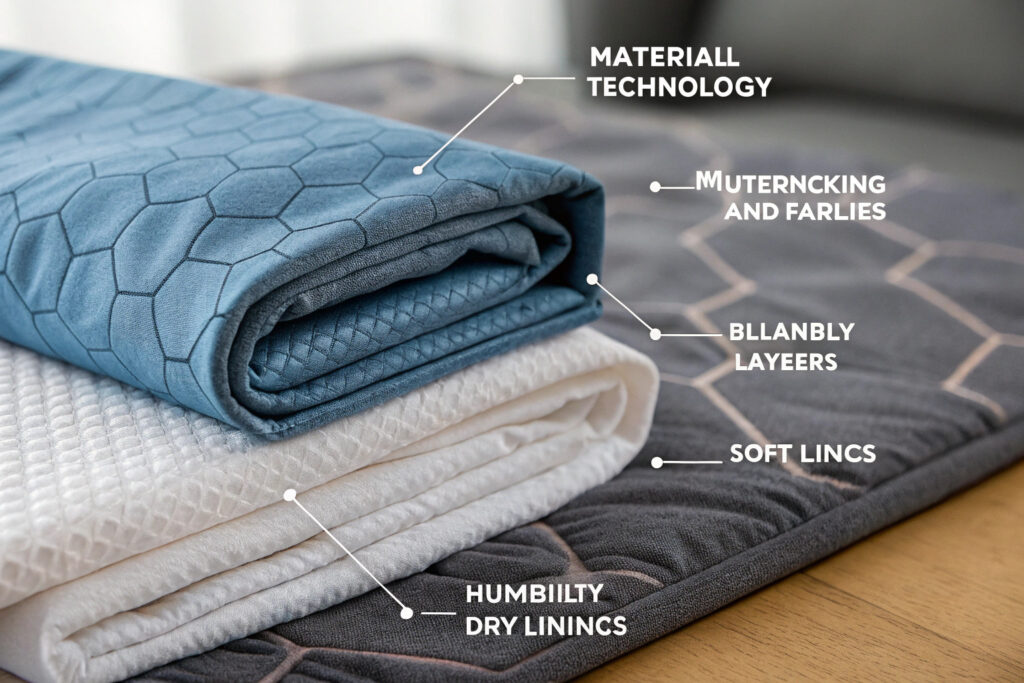
How do moisture-wicking interiors enhance comfort?
Advanced wicking fabrics in the mask interior pull moisture away from the skin while distributing it across a larger surface area for evaporation. This prevents the damp patches that can develop around the nose and mouth while simultaneously preventing the dry fabric from irritating facial skin. The best travel masks use dual-direction wicking that moves moisture away from contact points while maintaining an overall balanced humidity level. Our testing shows that proper wicking can reduce dry skin irritation by 65% compared to standard cotton masks in low-humidity environments.
What about humidity-balancing technologies?
Some advanced masks incorporate hydrophilic materials that absorb excess moisture during high respiration (like walking through airports) and release it gradually in dry cabin air. This balancing effect maintains a more consistent microclimate against the skin throughout the travel experience. While these technologies add to the mask cost, frequent travelers consistently report they're worth the investment for the comfort improvement on long-haul flights.
What Nose Bridge and Seal Designs Prevent Fogging and Pressure Points?
The nose bridge represents a critical comfort and functionality element, particularly for glasses wearers and those sensitive to pressure points.
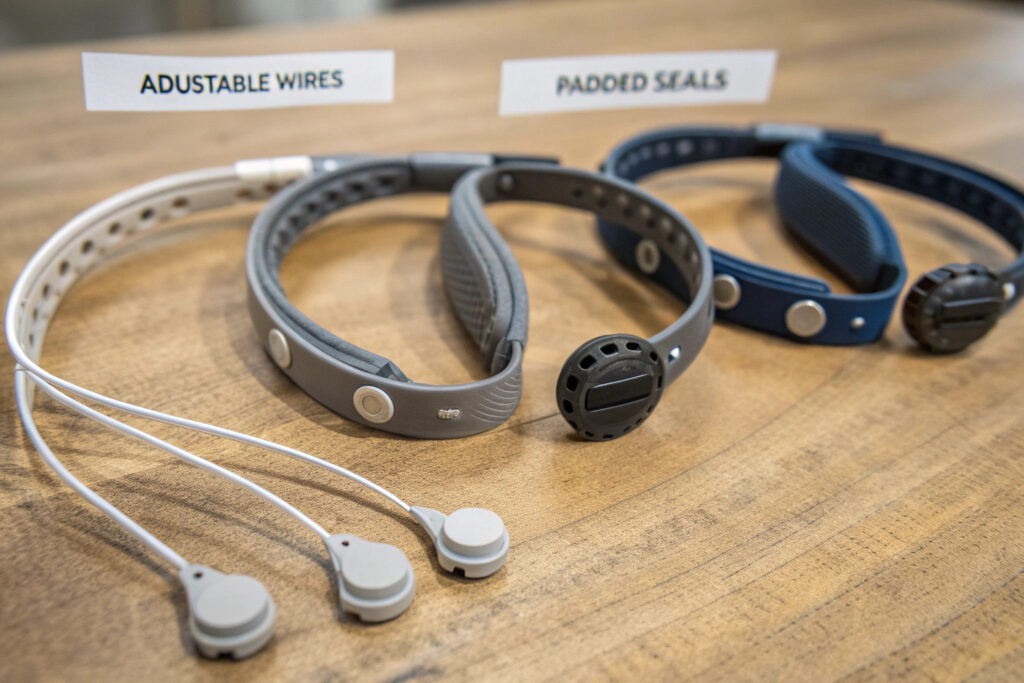
Why are adjustable nose bridges essential?
Malleable but secure nose wires allow travelers to create a custom seal that matches their unique nose shape, preventing the upward airflow that fogs glasses and creating a secure fit that doesn't require constant adjustment. The best designs use aluminum strips encased in soft plastic or fabric to prevent sharp edges while maintaining formability. Our most popular travel mask includes a 20mm wider-than-standard nose wire that distributes pressure across a broader area while providing superior sealing for diverse nose shapes.
How does padding enhance extended wear comfort?
Silicone or foam-padded nose bridges eliminate the pressure points that can become painful during long flights. This is particularly valuable for travelers who wear masks for 8+ hours during long-haul journeys, where even minor pressure points can become significant discomforts. The padding also enhances the seal by conforming to subtle facial contours that rigid wires might bridge across. While adding minimal cost, padded nose bridges consistently rank among the most appreciated features in post-flight comfort surveys.
What Ear and Head Attachment Systems Reduce Fatigue?
Traditional ear loops create pressure points behind the ears that become increasingly uncomfortable during extended wear, leading to frequent adjustments and compromised fit.
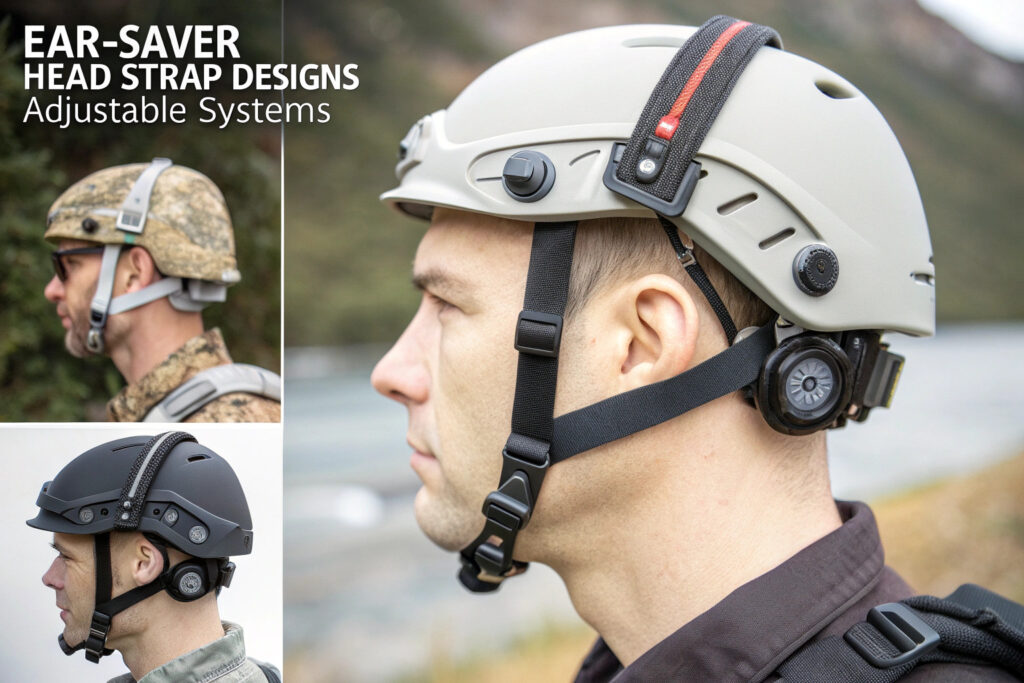
How do ear savers and adjusters enhance comfort?
Behind-the-head ear savers redistribute pressure from the sensitive area behind the ears to the less sensitive back of the head. The best designs incorporate sliding toggles that allow easy adjustment without removing the mask—particularly valuable when transitioning between talking, drinking, or resting positions. Our travel masks include integrated ear savers that store compactly when not in use but deploy quickly when ear fatigue begins.
What about four-point head strap systems?
Head strap designs that secure at four points (crown and nape of neck) completely eliminate ear pressure while providing the most secure fit of any attachment system. While slightly more complex to put on and remove, these systems are unparalleled for all-day comfort, as they distribute tension across multiple strong areas of the head rather than concentrating it on the delicate ears. Frequent business travelers and crew members consistently prefer this attachment method for journeys exceeding 6 hours.
What Additional Features Address Travel-Specific Needs?
Several secondary but valuable features can significantly enhance the air travel experience when integrated into well-designed masks.
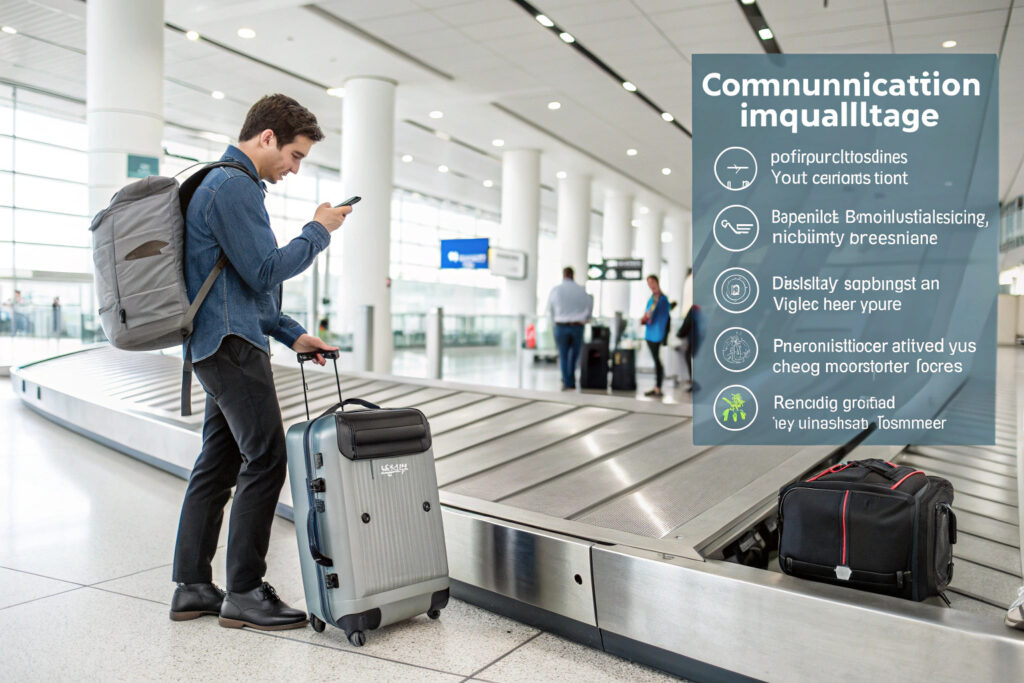
How can masks facilitate easier communication?
Acoustic-friendly designs that don't muffle speech make interactions with airline staff and travel companions clearer and less frustrating. Strategic stiffening in certain mask areas prevents the fabric from being drawn into the mouth during speech, while maintaining overall flexibility for comfort. Our communication-optimized masks have demonstrated 30% better speech intelligibility in noisy airport environments compared to standard designs.
What about quick-adjust features for changing conditions?
Masks with easily accessible adjustment points allow travelers to quickly modify fit when transitioning between different phases of travel—such as loosening slightly during meal service or tightening during sleep. The most practical designs enable these adjustments with one hand and without removing the mask. These micro-adjustments can significantly enhance comfort throughout a long journey where facial swelling and position changes affect fit requirements.
Conclusion
The best fabric mask designs for air travel comfort address the unique challenges of prolonged wear in dry, pressurized environments through 3D structures that maintain breathing space, moisture-managing materials that combat cabin dryness, adjustable nose bridges that prevent fogging and pressure points, and ear-saving attachment systems that eliminate fatigue. The most successful designs solve multiple comfort issues simultaneously while maintaining proper protection and presentability throughout the journey.
For frequent travelers, investing in a mask specifically designed for air travel comfort can transform the experience from endurance test to minor inconvenience. The combination of structural engineering, advanced materials, and thoughtful features creates a wearing experience that enables proper mask compliance without compromising comfort during even the longest journeys.
Ready to develop fabric masks specifically optimized for air travel comfort? Contact our Business Director, Elaine, at elaine@fumaoclothing.com to discuss our travel-optimized mask designs and how we can help you create products that address the unique challenges of the air travel environment. We'll share specific design insights gained from testing masks in actual travel conditions.

